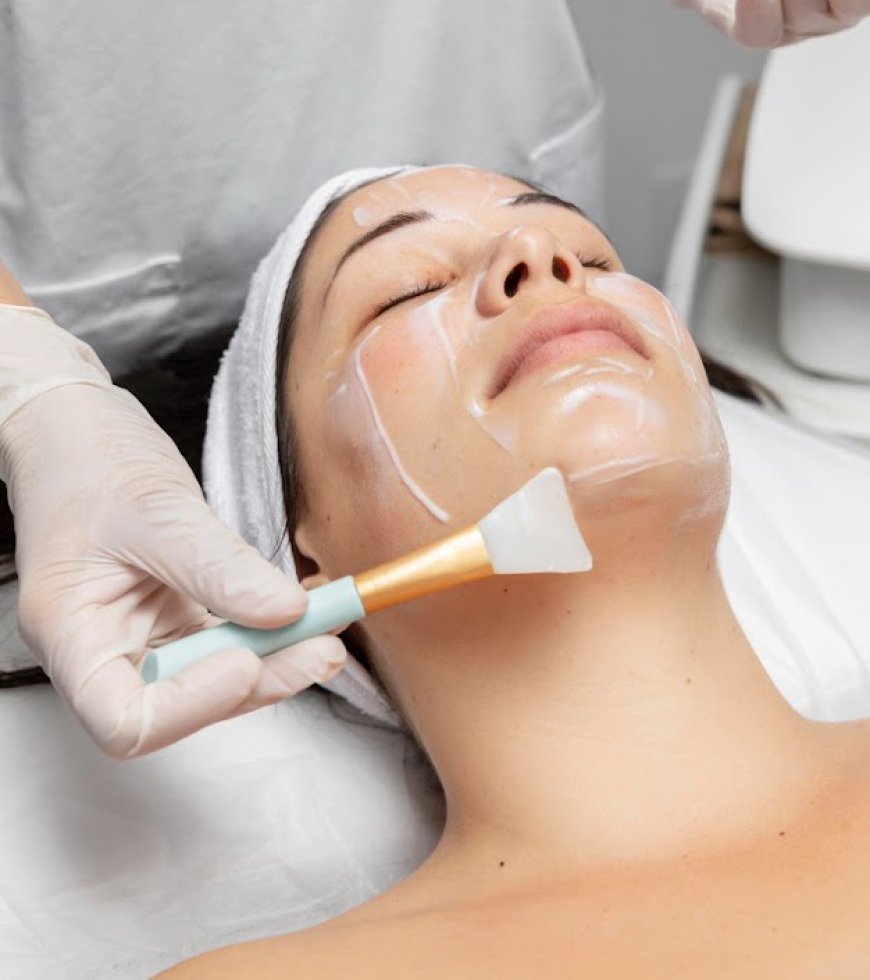Chemical Peels vs. Other Treatments: What’s Best for Your Skin in Dubai?
A chemical peel is a cosmetic treatment designed to improve the appearance of the skin by applying a chemical solution to the face, neck, or hands.

In Dubai, where the sun shines year-round and the city boasts a vibrant lifestyle, skincare treatments are more than just a luxury – they’re a necessity. Among the most popular and effective treatments available today are Chemical Peels Dubai, which exfoliate the skin to reveal a fresher, smoother, and more youthful appearance. However, Dubai offers an array of other skin treatments, from laser facials to microneedling and dermal fillers, which can also enhance the skin’s texture and address various concerns.
1. Chemical Peels: The Basics
A chemical peel involves applying a chemical solution to the skin, which exfoliates the top layers of dead skin cells to reveal newer, fresher skin underneath. Depending on the depth of the peel, it can address various concerns, such as acne, aging, hyperpigmentation, sun damage, and uneven skin tone.
Chemical peels are categorized into three types:
- Superficial peels (also called light peels): These target the outermost layer of skin and are effective for mild acne, dryness, and rough texture.
- Medium-depth peels: These penetrate deeper into the skin and are ideal for wrinkles, age spots, and moderate acne scars.
- Deep peels: These provide the most dramatic results, treating deep wrinkles, severe acne scars, and significant sun damage.
In Dubai, chemical peels are a popular choice for those seeking non-invasive treatments with minimal downtime. With the city’s hot, sunny climate, they’re a great option for rejuvenating the skin after sun exposure and reducing the appearance of sunspots and fine lines.
2. Laser Skin Resurfacing: Precision Treatment for Clearer Skin
Laser skin resurfacing uses targeted laser technology to remove damaged skin layers and stimulate collagen production, helping to improve skin texture, tone, and appearance. There are two primary types of laser treatments:
- Ablative lasers: These remove the outer layers of skin and are used to treat deep wrinkles, scars, and sun damage.
- Non-ablative lasers: These stimulate collagen production without removing the outer skin layers, making them ideal for fine lines, mild acne scars, and skin tightening.
Laser skin resurfacing is effective for treating more specific skin concerns and tends to produce long-lasting results. However, it generally requires more downtime compared to chemical peels, especially with ablative treatments.
Pros of Laser Skin Resurfacing:
- Effective for treating deep wrinkles, scars, and skin imperfections.
- Stimulates collagen production, improving skin texture and elasticity.
- Can target specific areas more precisely.
Cons:
- More expensive than chemical peels.
- Downtime can range from a few days to several weeks, especially with ablative lasers.
- Requires a skilled practitioner for best results.
In Dubai, where luxury skincare treatments are prevalent, laser resurfacing has become a go-to treatment for those seeking targeted skin rejuvenation, particularly for sun damage and deep wrinkles.
3. Microneedling: A Non-Chemical Solution for Collagen Stimulation
Microneedling, also known as collagen induction therapy, involves using a device with tiny needles to create micro-injuries in the skin. These tiny wounds stimulate the body’s natural healing process, promoting collagen and elastin production, which leads to smoother, firmer, and more youthful skin. Microneedling is particularly effective for:
- Fine lines and wrinkles
- Acne scars
- Large pores
- Stretch marks
Microneedling is less invasive than both chemical peels and laser resurfacing, with little downtime and minimal risk. However, multiple sessions may be required for optimal results, especially when treating deeper scars or wrinkles.
Pros of Microneedling:
- Non-invasive with minimal downtime.
- Safe for all skin types, including darker skin tones.
- Can treat a variety of skin concerns, from fine lines to acne scars.
Cons:
- Requires multiple sessions for noticeable results.
- Can cause temporary redness and irritation after treatment.
- Less effective for deep pigmentation issues compared to chemical peels or lasers.
For Dubai residents looking for a treatment that targets textural imperfections without much downtime, microneedling is a great choice. Its versatility and ability to treat a variety of concerns make it a popular option among those seeking non-surgical skin rejuvenation.
4. Dermal Fillers: Adding Volume and Contouring
Dermal fillers are injectable treatments that restore lost volume, smooth wrinkles, and enhance facial contours. They are typically used to address:
- Deep wrinkles
- Nasolabial folds
- Hollow cheeks or under-eyes
- Thin lips
Unlike chemical peels, dermal fillers don’t exfoliate the skin. Instead, they add volume and plumpness to areas that have lost elasticity due to aging or other factors. Popular filler ingredients include hyaluronic acid, calcium hydroxylapatite, and polylactic acid.
Pros of Dermal Fillers:
- Immediate results with no downtime.
- Can provide subtle to dramatic changes, depending on the amount used.
- Effective for areas of the face that need volume or contouring.
Cons:
- Results are temporary (typically last 6-18 months).
- Can cause swelling, bruising, or discomfort at the injection sites.
- Not suitable for treating surface skin issues like acne or pigmentation.
While dermal fillers are excellent for adding volume or contour to the face, they don’t address the surface texture of the skin, making them less suitable for sun damage or skin discoloration compared to chemical peels or lasers.
5. Chemical Peels vs. Other Treatments: Key Differences
Conclusion: Which Treatment is Right for You?
Choosing between chemical peels, laser skin resurfacing, microneedling, or dermal fillers depends on your unique skin concerns, budget, and the time you’re willing to dedicate to recovery.

 Royalclinic34
Royalclinic34